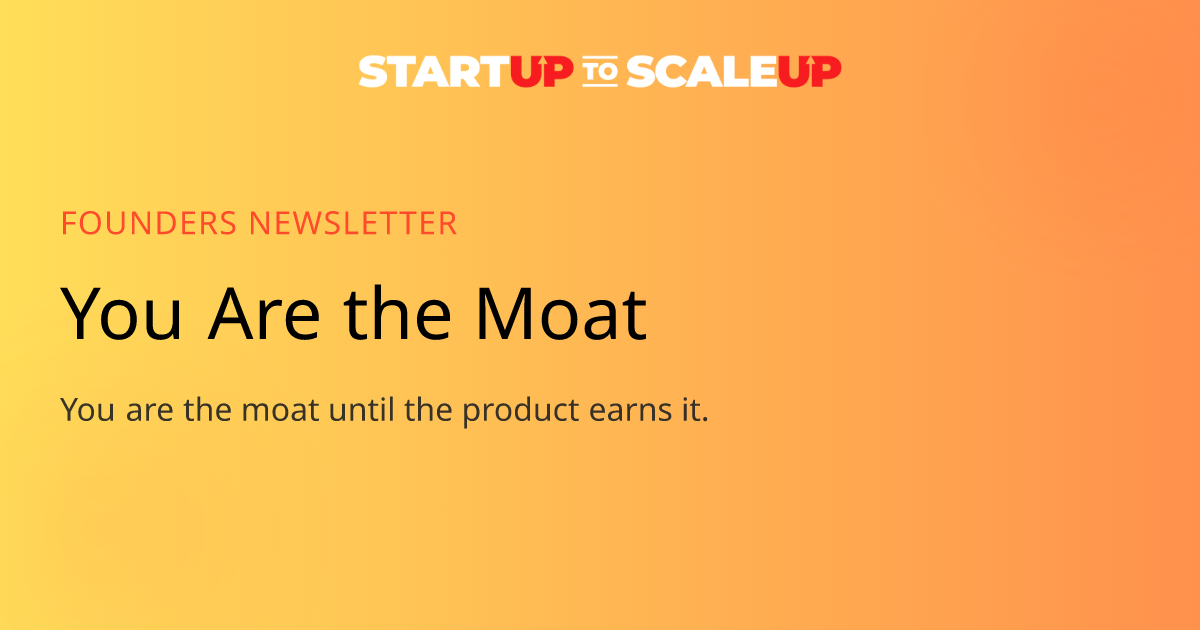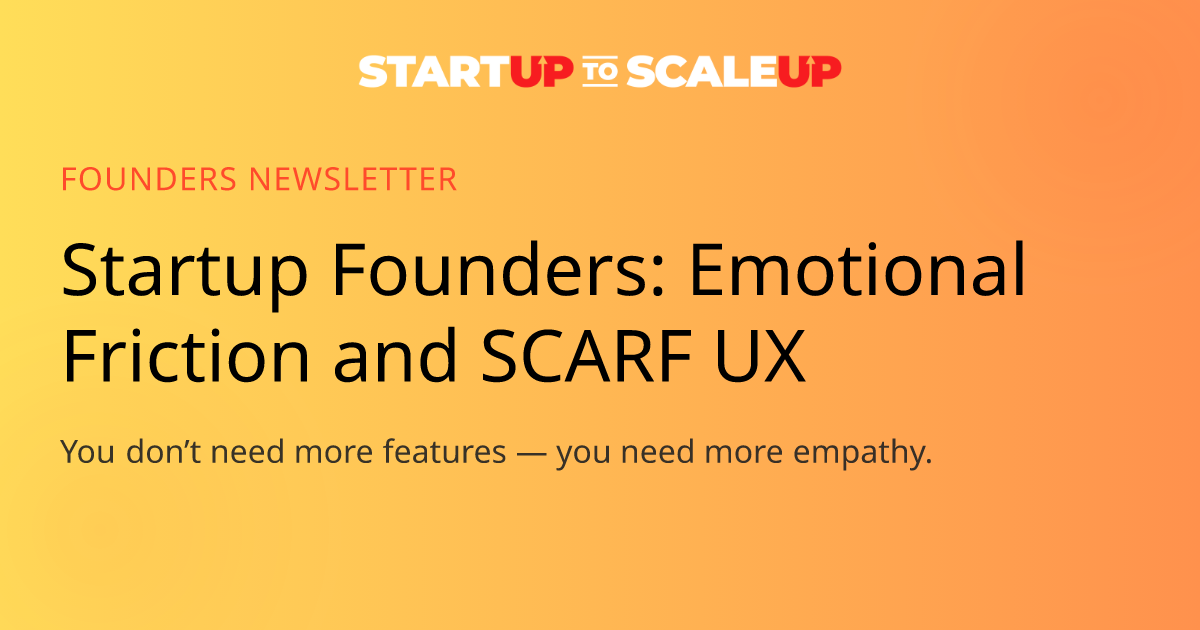The Low-Friction Pricing Playbook for Early Startups
Published August 18, 2024
Core Takeaway
TLDR
- Most founders pick pricing via the 'dinner plan model' - 'I dunno, what sounds good?' - resulting in confusion and lost opportunities
- Price in a way that's clear, straightforward, and predictable - sell how your customer buys to reduce friction and improve conversion
- Avoid pricing innovation and unnecessary complexity - your customers have bought software before; focus on making it easy for them to buy on their terms
Newsletter
Hey Reader,
Most StartUp Founders pick their solution pricing via the "dinner plan model" - "I dunno, what sounds good?" Shockingly, this approach is about as helpful to your startup & your customers as it is to your significant other.
How much should you charge for your product? Simple. The right amount. The right amount is the one that's clear, straightforward, & predictable. No surprises, no games. More right than wrong.
Just get your first wave of customers in the door paying an equitable price, as quickly and simply as possible. No drama. Don't overthink it.
LAST WEEKS FRAMEWORK:
4.5 Product Led Growth: Is Mostly Delayed Churn (Join Convo)
LETS GET INTO IT:
If you're scrambling to figure out pricing at launch, you've got bigger problems, it means you're not in traffic talking to potential customers [5:5:5]. Pricing is an outcome of being in traffic, a direct reflection of your understanding of your ideal customer. Who did you build the product for? [Your Atomic ICP]
If you didn't get in traffic, you're likely running a "keep the lights on" or "don't scare them away" pricing playbook, trying to find a sweet spot with no real data. Which means you'll underprice, that's what founders do, unsure if they can justify a price that makes them a touch uncomfortable.
Early-Stage Pricing: Minimize Friction
You don't have enough leads. You cannot afford to scare off a prospect for any reason. Price, trust, transparency, complexity. Your customers have bought software before; they understand value, and they know the playbook. Give them credit:
- Sell how your customer buys. Meet them where they are, what they are used to. If they use seats, consumption, or storage, mirror that. One less thing for them to have to understand.
- Anchor to the expected. Your customer has bought similar tech before. They have a mental price point. Start there. Go higher if you're truly revolutionary, lower to reflect your newness...
- Do Not Price Innovate. Complex or weird pricing models confuse and alienate. Stick to simple, transparent pricing that's easy to understand. Innovate on your product, not on pricing.
- GREEEEED. Don't burn a great prospect with unnecessary implementation or service fees or gotchas. Your customers are clever; they'll walk.
- Enable Async Buying: You're losing customers without even knowing it. They come to your website, can't find clear answers, get hit with a forced sales call, or asked to trade their email for your shitty e-book. Get rid of it. [The Golden Handshake]
Just give the information they need, when they need it. Clear pricing, FAQs, self-serve demos, live chat (without email)… Make it easy for them to buy on their terms. Not yours.
If they have to ask a question about your pricing, you introduced friction.
StartUp SaaS Pricing | A Perspective
What Now?
There's no magic calculator - your "perfect" price doesn't exist - depends on product, market, customers, timing, sales capability, customer type, wind direction... just get away from complex value-based pricing gymnastics.
It all goes back to basics, aligning your price with the customer's perception of value/worth.
- What pain are you alleviating? [Problem Statement]
- How much time/money are you saving them? [Problem Impact]
- What's their alternative if your solution didn't exist? [Value Chain]
Off Topic: The way you present pricing impacts customer perception, and absolutely influences a buying decision. Anchoring, framing, scarcity, decoy - once you know them, you see them everywhere. Let's not forget the $x.99 trick still works on you...
You'll screw it up. You'll have revenue leakage. You'll misjudge an opportunity. You'll look at acquisition instead of retention. It's part of the learning curve.
Start with a view you can stand behind, gather data, pray a little bit, and iterate as you learn anything.
Do anything to reduce friction, build trust, and get to market. Simple and fair.
-- James
Off topic. I'm thinking of converting all these modules into a cohesive live course, from idea origination to first customers, literally pebble by pebble. Would this be helpful? (also, if you are a wizard at this stuff, reach out)
More Newsletters
Continue Your Founder Journey
Explore all the resources available to help you build and scale your startup
Startup Frameworks Library
Subscribe to the Newsletter
Join 140,000+ founders getting exclusive strategies, frameworks, and founder stories every Sunday.
Get instant access to the 50-Step Founder Playbook downloaded over 1M times


